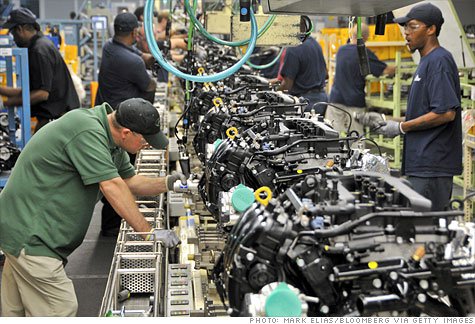By Russell Lamberti
 Last week I had a discussion and debate on Summit TV with Nedbank Chief Economist Dennis Dykes, hosted by the very sharp Erika van der Merwe. The occasion was the South African Reserve Bank’s MPC rate decision and the topic meandered from real interest rates, to sustainable investment, to price inflation and oil, to the exchange rate. You can watch the interview in two parts here and here.
Last week I had a discussion and debate on Summit TV with Nedbank Chief Economist Dennis Dykes, hosted by the very sharp Erika van der Merwe. The occasion was the South African Reserve Bank’s MPC rate decision and the topic meandered from real interest rates, to sustainable investment, to price inflation and oil, to the exchange rate. You can watch the interview in two parts here and here.
At one point Dennis asserted that the risk associated with raising the repo rate from extreme cyclical lows was that it would potentially cause a flood of foreign capital to SA shores, causing the rand to strengthen and in turn damaging an already fragile domestic manufacturing sector. This is a very common assertion and is a theory that in large part underpins the rationale for the global currency wars. As I explained in Elegant Chaos, currency wars are “the ‘competitive devaluation’ of national currencies, a game of reciprocal one-upmanship in which nation-states aim to steal export market share and growth from one another by making their products cheaper in foreign currency through exchange rate manipulation.”
But is this true? Can devaluing ones currency really confer sustainable benefit to producers?
The answer is emphatically NO.
Paper is not Capital
Printing more pieces of paper or creating more digital entries on balance sheets out of thin air, which is the modus operandi of currency debasement, can never aid the productive process in a real and sustainable way. Since the factors of production consist only of original factors (land, resources, labour) and capital goods, the only way to produce more products in a more efficient way is to use more factors and use each factor more efficiently.
This means that land and resources cannot be subject to onerous taxes or ill-defined property rights, and people need to be well trained, able, and willing to work. But this is not sufficient. Without the accumulation of real capital, physical natural endowments and labour would remain highly unproductive. Original factors of production are only made truly productive with tools, machines, vehicles, roads, warehouses, supply chains, communication technology and so on. The more real capital in a society, the more productive each square meter of land, each ton of mineral, and each person will be.
The great manufacturing and export powerhouses of the globe have become so through capital accumulation and capital maintenance. By so doing they have achieved high levels of employment and their people have become more productive than people in other countries. This real productivity is what gives these countries the edge, not currency debasement.
Capital accumulation is difficult at the best of times. It requires sacrifice. Specifically it requires a society to consume less than it produces, putting aside the surplus to fashion the things it cannot directly consume but which help it consume more in the future by making it more productive. The portion of required capital accumulation and maintenance that cannot be covered by domestic real savings must be obtained by drawing on an additional pool of real savings from foreigners.
Capital is not some infinite non-scarce mass roaming the earth in search of orphans to devour. It is the result of deliberate human action when individuals refrain from present consumption in order to consume more in the future.
The issue is therefore rather simply distilled – in order for domestic manufacturers to prosper they need to be efficient, a result that can only be achieved by real capital accumulation. That capital in turn needs to be periodically maintained, improved, and replaced. This includes not only specific capital like machinery and equipment, but non-specific capital like transport and energy infrastructure or buildings. The greater the real abundance and supply of capital, the lower the real cost of capital, and therefore the more competitively products can be produced.
It rests upon the monetary and fiscal authorities therefore to ensure the friendliest possible environment for capital accumulation. From a domestic policy perspective this means removing obstacles and disincentives to the accumulation of real savings. In addition, to the extent that domestic savings may fall short of meeting capital accumulation and maintenance requirements, it requires a foreign policy of removing obstacles and disincentives to foreign capital entering the domestic economy.
Time to Set Capital Free
South Africa is a relatively capital scarce country which requires the accumulation of considerably more real capital. Excessively low interest rates, price inflation, and currency debasement can only discourage real savings in favour of excessive consumption, not to mention the destructive capital consuming effects of direct taxes on profits, savings, capital gains and family estates that funnel funds into wasteful government consumption programmes. Moreover, a weak exchange rate policy can only discourage foreign capital by undermining the foreign currency value of repatriated future returns, which is not helped by the various obstacles facing foreign capital in the form of capital controls, foreign ownership restrictions, investment income taxes, and onerous compliance rules.
Contrary to the consensus view, by not raising the repo rate, not ridding the economy of price inflation, not instituting a strong currency policy, and not reforming tax and capital control policy, the monetary and fiscal authorities have conspired to ensure domestic manufacturing remains on the whole insufficiently competitive to be the engine of growth, employment and economic upliftment it could and should be.
Russell Lamberti is Head Strategist at ETM Analytics, in charge of global and South African macroeconomic, financial market, and policy strategy within the ETM group. Follow him on twitter.
